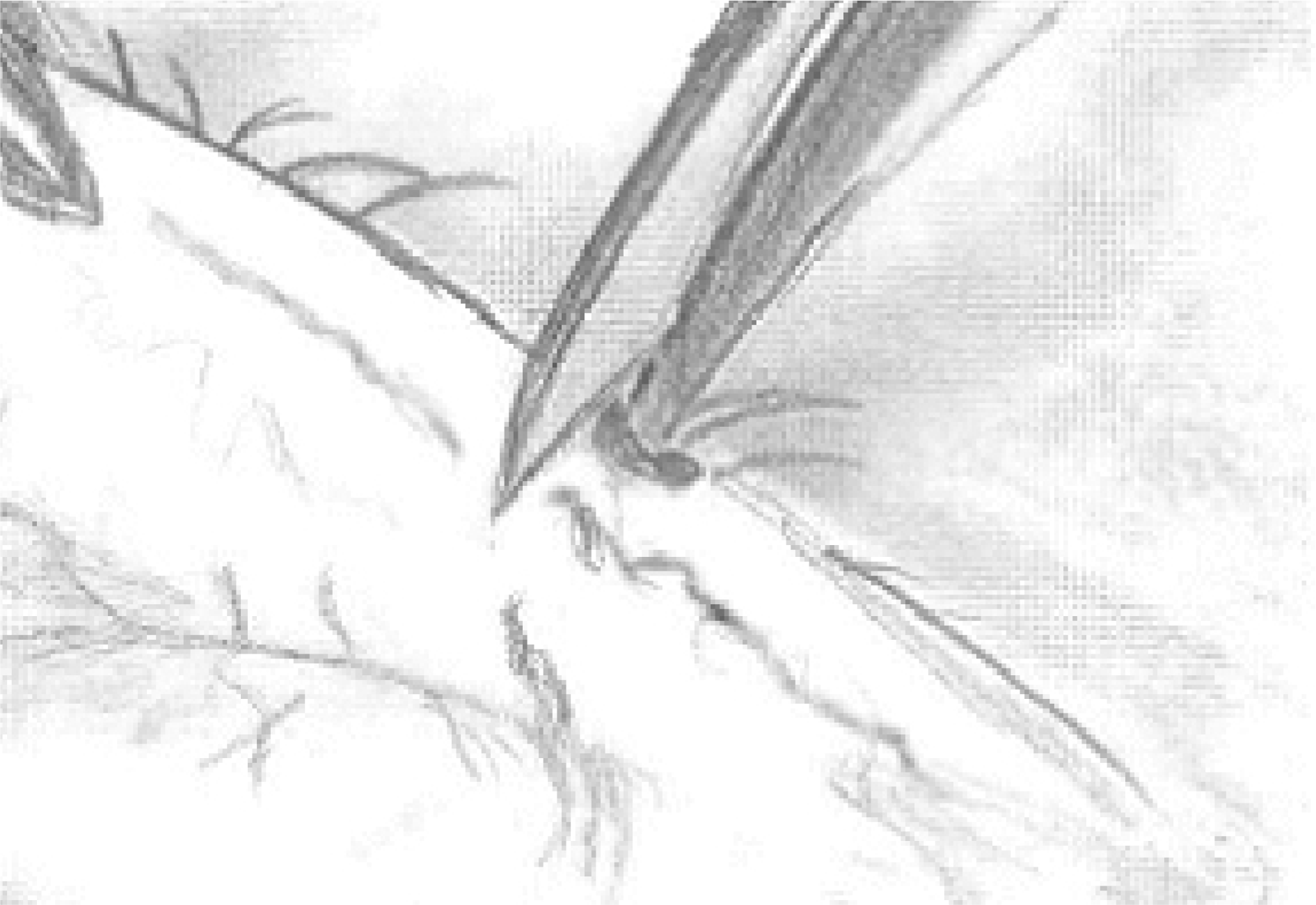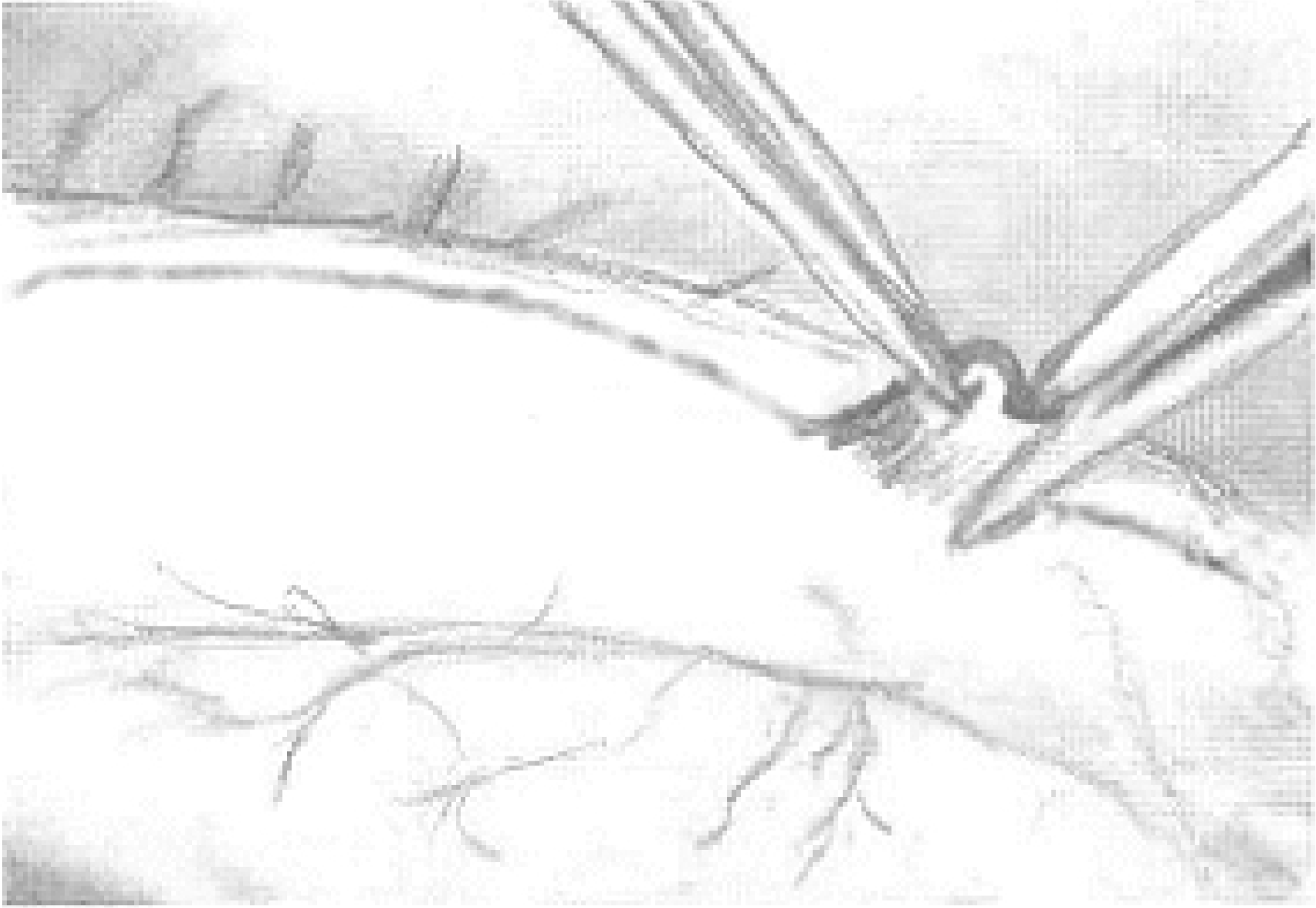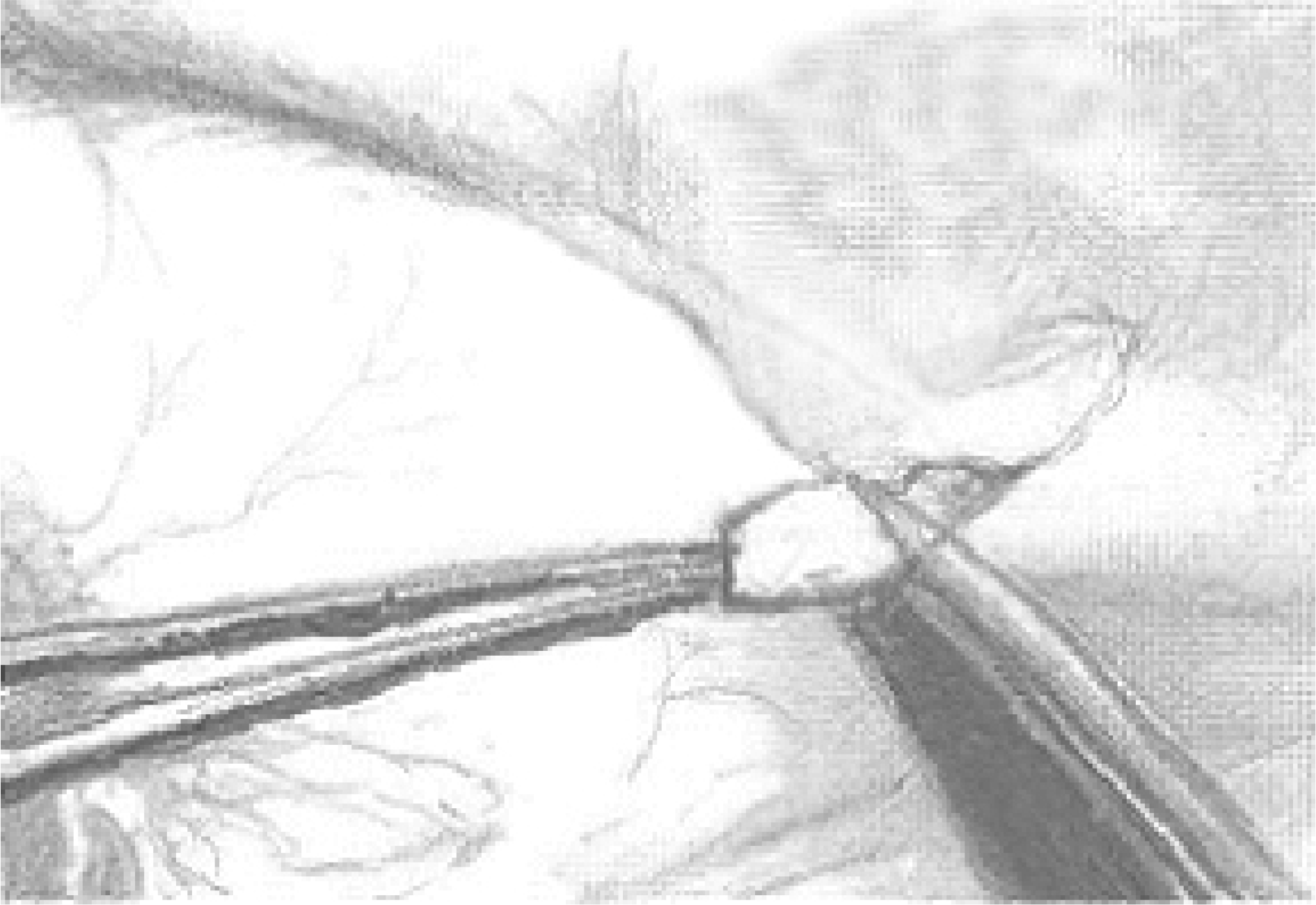Abstract
Purpose
To compare surgical results of two patient groups with punctal obstruction. One group underwent punctoplasty while the other group underwent silicone tube intubation.
Methods
We compared postoperatively 48 eyes of 37 patients with punctal obstruction within and after one year of the procedure. 24 eyes of 17 patients had punctoplasty and 24 eyes of 20 patients had silicone tube intubation by the same surgeon.
Results
Upon follow-up within one year after the punctoplasty, 13 eyes (54%) showed no epiphora, nine eyes (38%) showed intermittent epiphora, and two eyes (8%) showed persistent epiphora. However, after silicone tube intubation, 20 eyes (83%) showed no epiphora, three eyes (13%) showed intermittent epiphora, and one eye (4%) showed persistent epiphora. Over one year after the punctoplasty, one eye (4%) showed no epiphora, 19 eyes (78%) showed intermittent epiphora, and four eyes (17%) showed persistent epiphora. However, after the silicone tube intubation, 17 eyes (71%) showed no epiphora, six eyes (25%) showed intermittent epiphora, and one eye (4%) showed persistent epiphora.
References
1. Kristan RW. Treatment of lacrimal punctal stenosis with a one-snip canaliculotomy and temporary punctal plugs. Arch Ophthalmol. 1988; 106:878–9.

2. Jones LT. The cure of epiphora due to canalicular disorders, trauma and surgical failures on the lacrimal passage. Trans Am Acad Ophthalmol Otolaryngol. 1962; 66:506–24.
3. Veirs ER. larimal disorder: Disgnosis and treatment. St Louis, Mo: CV Mosby;1976. p. 68–71.
4. Lamping K, Levine MR. Jones' tubes How good are they? Arch Ophthalmol. 1983; 101:260–1.
5. Jones LT, Wobig JL. Surgery of the Eyelids and Lacrimal System. 1st ed.Birmingham, Ala: Aesculapius;1976.
6. Doane MG. Blinking and the mechanics of the lacrimal drainage system. Ophthalmology. 1981; 88:844.

7. Carter KD, Nelson CC, Martonyi CL. Size variation of the lacrimal punctum in adult. Ophthal Plast Reconstr Surg. 1988; 4:231–3.
8. Yoon KC, Jeong SK, Park YG. Study of lacrimal punctal size in normal adults. J Korean Ophthmol Soc. 1997; 38:1916–20.
9. Bowman W. Methode de traitment applicable a l'epiphora dependent du renversement en dehors ou de l'obliteration des points lacrymaux. Ann Oculist. 1853; 29:52–5.
10. Veirs ER. Disorders of the canaliculus in The lacrimal system. New York: Grune and Stratton;1955. p. 46–7.
11. Awan KJ. Laser punctoplasty for the treatment of punctal stenosis. Am J Ophthalmol. 1985; 100:341–2.

13. Huges WL, Maris CS. A clip procedure for stenosis and eversion of the lacrimal punctum. Trans Am Acad Ophthalmol Otolaryngol. 1967; 71:653–5.
14. Go HG, Na TY. Punctoplasty using Cut Down Tube. J Korean Ophthalmol Soc. 2004; 45:546–51.
15. Jeong SK. A simple test for epiphora caused by punctal stenosis. J Korean Ophthalmol Soc. 1998; 39:2864–6.
16. Gwag J-Y, Jang HG. Silicone intubation for treatment of punctal stenosis. J Korean Ophthalmol Soc. 2003; 44:2451–6.
17. Park HJ, Hwang WS. Clinical results of silicone intubation for epiphora patients. J Korean Ophthalmol Soc. 2000; 41:2327–31.
Figure 1.
A vertical snip incision was made at the lateral aspect of the posterior rim of the punctum.

Figure 2.
A second vertical snip incision was made on the medial aspect of the posterior rim of the punctum.

Table 1.
Characteristics of patients distribution
| Surgery | Sex | Number of patients (eyes) |
|---|---|---|
| Punctoplasty | male | 11 (7) |
| | female | 13 (10) |
| Silicone tube intubatio | on male | 8 (6) |
| | female | 16 (14) |




 PDF
PDF ePub
ePub Citation
Citation Print
Print



 XML Download
XML Download